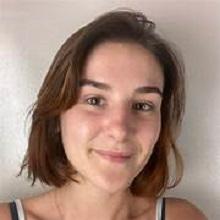Julie Camici, Doctorante équipe PAM du CRNL
Julie Camici, Doctorante équipe PAM du CRNL

I am pleased to invite you to my thesis defense, titled «Rhythm processing in music and speech perception and production, from infancy to adulthood» which will be presented in French (with slides in English).
It will take place on Tuesday, April 1st, 2025, at 1:00 PM in the Neurocampus amphitheater in Bron.
You will find the thesis abstract in English at the end of this message.
The jury will be composed of:
- Jessica Tallet (Reviewer)
- Thierry Nazzi (Reviewer)
- Marie Lallier (Examiner)
- Delphine Dellacherie (Examiner)
- Fabien Perrin (Examiner)
- Anne Kösem (Thesis Director)
- Barbara Tillmann (Thesis Co-Director)
- Olivier Bertrand (Thesis Co-Director)
For those unable to attend in person, a Teams link is also available:
------------------
ABSTRACT
Speech is an acoustic signal that exhibits a certain degree of temporal regularity. Both for comprehension and production, the rhythmic patterns appear to play a crucial role in the temporal processing of language, particularly in the acquisition of a native language and a second language (L2). The goal of this PhD thesis is to examine the impact of musical and language rhythms on speech processing, in both perception and production, from infancy to adulthood, in individuals with and without language disorders. Through a series of behavioral and electroencephalographic (EEG) experiments, the hypothesis of a link between auditory rhythmic perception and language perception and production was tested. Exposure to regular musical rhythms may lead the brain to better process incoming sounds in time, thereby improving the segmentation of the speech signal. Similarly, enhanced auditory rhythmic abilities could benefit speech production by fostering more regular and intelligible speech patterns. Study 1 explored the relationship between musical rhythmic perception and speech perception in adults learning French as a second language. To this end, a rhythmic priming paradigm was employed, where participants listened to either regular or irregular musical primes before hearing spoken sentences. Participants then performed a grammaticality judgment task on these sentences. The results showed that individuals with better rhythmic perception and musical expertise performed better in grammatical judgment tasks, and that regular rhythmic primes improved L2 perception in participants with musical training. Study 2 examined the rhythmic priming effect on the production of speech rhythm in children with and without developmental language disorders (DLD). The results revealed that the speech rhythm of children with DLD was slower and more variable than that of control children, and that children with DLD spoke more regularly after regular rhythmic primes, approaching the speech rhythm of control children. However, the rhythmic priming effect was dependent on age and reading skills: the benefit of rhythmic regularity increased as age and reading skills increased. Study 3 examined the perception of rhythm early in the neurodevelopment of language. The brain activity of 3-month-old infants was recorded while they listened to sentences in their native language (French), a rhythmically different foreign language (Dutch), and rhythmically filtered versions of these sentences. The data showed that the infants' brains can track both the speech signal and its rhythmic structure, regardless of whether implemented in their native or a foreign language. Our results suggest that rhythm may serve as a temporal scaffold for language processing. The findings of this PhD thesis suggest that musical rhythmic priming can be beneficial for L2 comprehension in adults and enhances speech rhythm perception and production in children, but results highlight the influence of individual differences (e.g., musical expertise in adults and reading age in children). These results also provide new insights into the neural mechanisms underlying the processing of complex temporal information in auditory and speech domains, and their role in language comprehension and production. Lastly, they offer promising perspectives for the development of new educational and therapeutic tools aiming to improve language acquisition and processing in both first and second language learners.
KEYWORDS: rhythm, temporal prediction, speech, music, native language, second language, EEG, language development
CRNL | CH Le Vinatier | Bâtiment 462 Neurocampus Michel Jouvet | Amphithéâtre | 95 Boulevard Pinel | 69500 Bron











